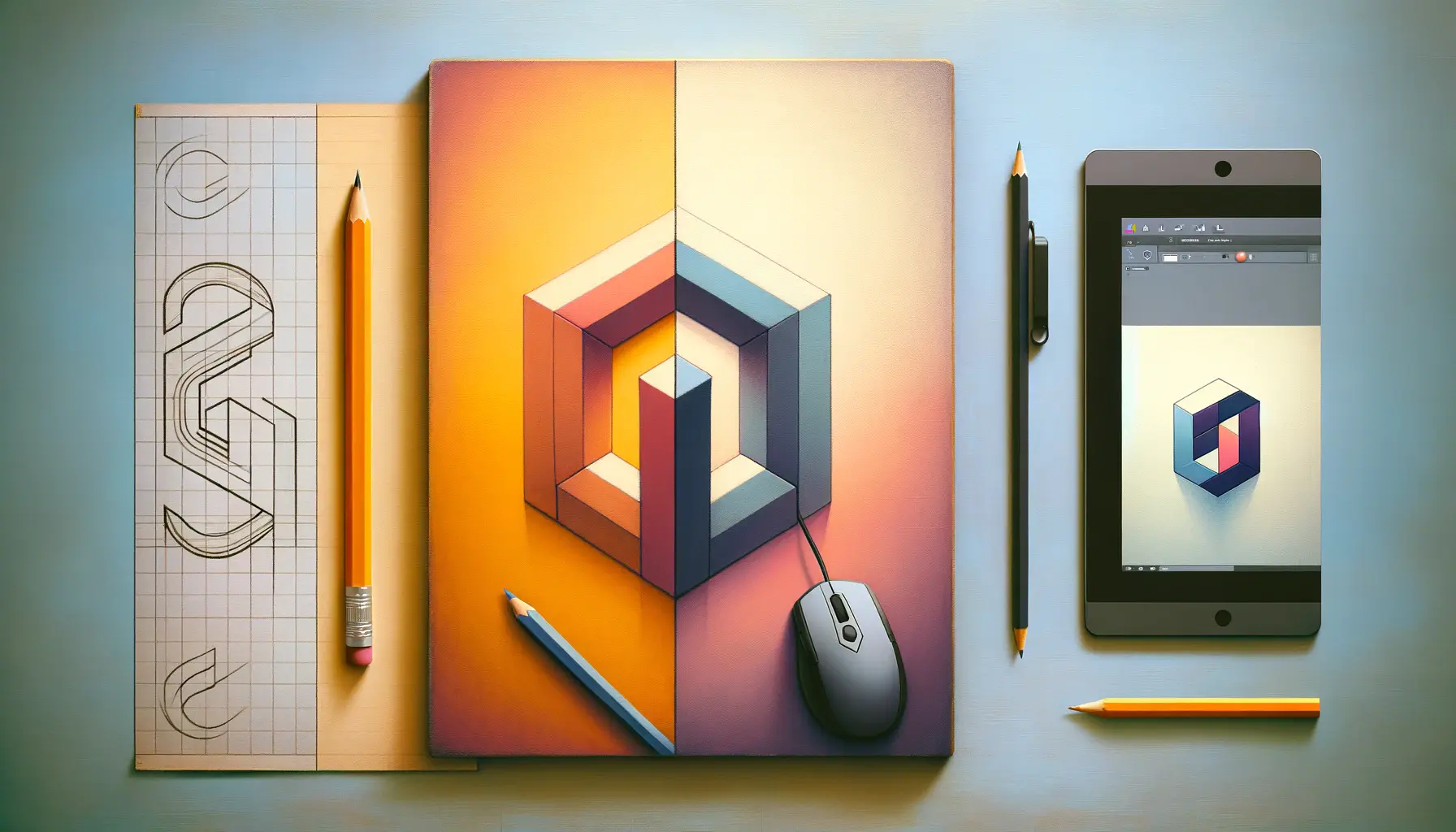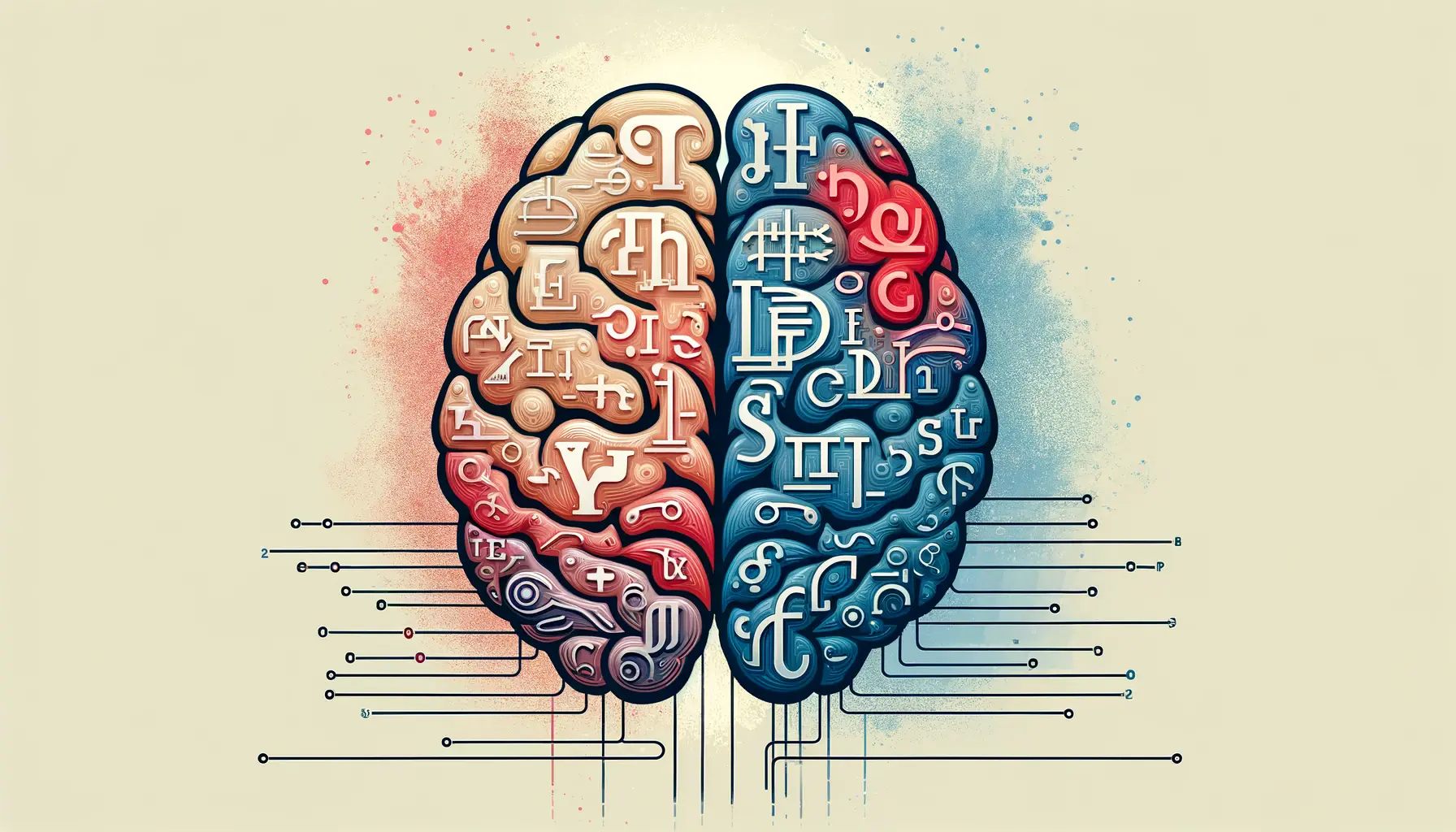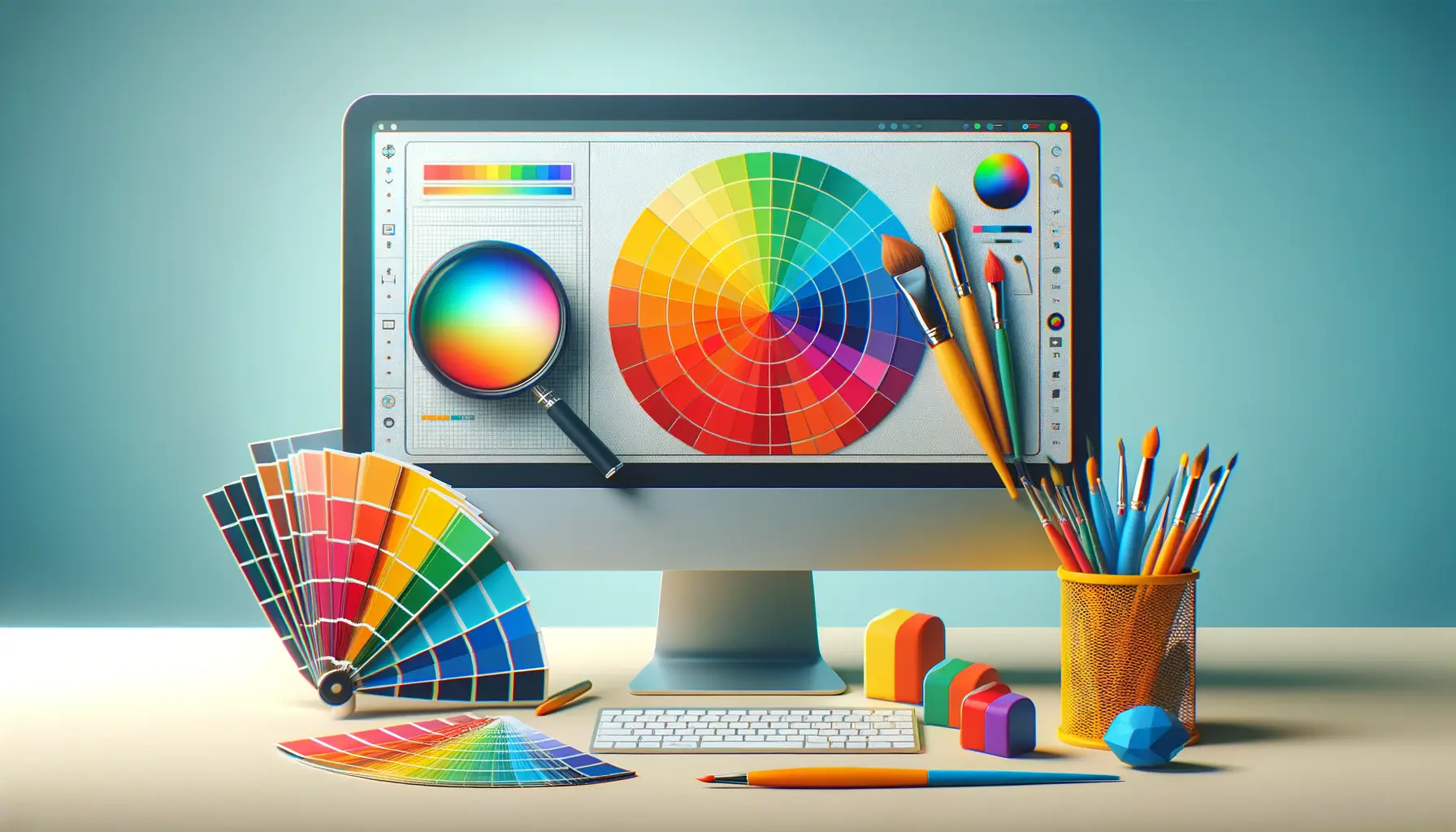Creating a memorable logo is an art form that requires a deep understanding of branding, design principles, and the psychological impact of visuals on the audience.
A logo is not just a random mark; it’s the face of a brand, encapsulating its essence, values, and personality in a single, visual representation.
For web designers, the challenge is to distill a brand’s complex identity into a logo that is not only visually appealing but also memorable and effective across various platforms.
In the digital age, where countless brands vie for attention, a memorable logo can be a significant differentiator.
It’s the first point of interaction with the audience, often before they engage with any content or product.
Therefore, crafting a logo that sticks in the viewer’s mind, conveys the brand’s message, and fosters brand loyalty is crucial for long-term success.
- Understanding the Basics of Memorable Logo Design
- Strategies for Crafting Unique Logos
- Impact of Color and Typography in Logo Design
- Embracing Simplicity and Versatility in Logo Design
- Integrating Brand Identity into Logo Design
- Adapting Logos for Digital and Print Media
- Engaging the Audience with Interactive Logo Design
- Conclusion: Crafting a Memorable Logo
- FAQs on Crafting a Memorable Logo
Understanding the Basics of Memorable Logo Design
The Psychology Behind Logo Recognition
At the heart of a memorable logo is its ability to connect with the audience on a psychological level.
Colors, shapes, and typography are not chosen at random; they are strategic decisions that evoke specific emotions and associations.
For instance, the color blue is often associated with trust and reliability, making it a popular choice for financial institutions.
Similarly, circular shapes are perceived as inclusive and welcoming, while sharp angles may convey precision and professionalism.
Understanding these psychological underpinnings is essential for web designers.
It allows them to create logos that not only stand out visually but also resonate with the target audience on an emotional level.
This connection is what transforms a simple logo into a memorable symbol that people can identify with and remember.
Key Elements of a Memorable Logo
A memorable logo is the sum of its parts, each element working in harmony to create a lasting impression.
Simplicity is the cornerstone of effective logo design.
A simple logo is not only more recognizable but also more versatile, easily adaptable across different mediums and sizes.
However, simplicity does not mean boring.
The challenge is to distill the brand’s essence into a simple yet unique design that captures attention and is easy to recall.
Another critical element is relevance.
A logo must accurately reflect the brand’s industry, values, and target audience.
This relevance ensures that the logo not only attracts the right audience but also communicates the brand’s message effectively.
For web designers, this means conducting thorough research and immersing themselves in the brand’s world to create a logo that truly represents its identity.
A memorable logo seamlessly combines simplicity, uniqueness, and relevance, striking a balance that resonates with the audience and stands the test of time.
Strategies for Crafting Unique Logos
Creating a logo that is both unique and memorable requires a strategic approach.
Web designers must navigate the fine line between innovation and clarity, ensuring that the logo stands out without sacrificing its message or recognizability.
Here are some strategies to achieve this delicate balance:
Incorporate Brand Storytelling
Every brand has a story, and a memorable logo serves as a visual shorthand for that narrative.
Incorporating elements of the brand’s history, mission, or values into the logo design can create a deeper connection with the audience.
For example, using an emblem that reflects the brand’s origins or incorporating imagery that conveys its core values can make the logo more meaningful and, consequently, more memorable.
Leverage Negative Space
Negative space, or the space around and between the subject of an image, can be a powerful tool in logo design.
When used creatively, it can add a layer of complexity and intrigue to a simple design, making it more engaging and memorable.
The classic FedEx logo, with its hidden arrow, is a prime example of effective use of negative space.
- Focus on Typography: The choice of typeface can significantly impact a logo’s memorability. Custom typography or unique font treatments can set a logo apart from the competition. However, it’s crucial to ensure that the typography aligns with the brand’s personality and is legible across various applications.
- Color Psychology: Colors evoke emotions and can significantly influence how a logo is perceived. Choosing the right color palette can enhance the logo’s memorability by associating it with specific feelings or attributes. Consider the brand’s message and the emotions you want to evoke when selecting colors.
- Simplicity and Scalability: A simple logo is more likely to be remembered and recognized. It’s also more versatile, easily adaptable to different sizes and mediums. Ensure the logo design is scalable, looking as good on a billboard as it does on a smartphone screen.
Test and Iterate
Creating a memorable logo is often a process of trial and error.
Testing the logo with focus groups or through A/B testing can provide valuable feedback on its effectiveness and memorability.
Don’t be afraid to iterate on the design based on this feedback.
The goal is to refine the logo until it resonates with the target audience and accurately represents the brand.
Remember, a memorable logo is not just visually appealing; it’s a strategic asset that communicates the brand’s essence and connects with the audience on an emotional level.
Impact of Color and Typography in Logo Design
The choice of color and typography in a logo goes beyond aesthetic appeal; these elements play a crucial role in conveying the brand’s identity and ensuring the logo’s memorability.
Understanding the psychology behind color and typography can empower web designers to make informed decisions that enhance the logo’s effectiveness.
Color has the power to evoke emotions and set the tone for the brand’s image.
Different colors can trigger various psychological responses, influencing how the audience perceives the brand.
For instance, blue can evoke feelings of trust and security, making it a popular choice for financial institutions, while green is often associated with growth and health, suitable for environmental or wellness brands.
- Choosing the Right Color Palette: Selecting the appropriate color palette is crucial for creating a memorable logo. Consider the brand’s personality and the message you wish to convey. A well-chosen color scheme can enhance brand recognition and evoke the desired emotional response from the target audience.
- Consistency Across Branding: Consistency in color usage across all branding materials reinforces brand identity and aids in memorability. Ensure that the logo’s colors align with the brand’s overall color scheme, including website design, packaging, and marketing materials.
Typography, on the other hand, can significantly impact the logo’s readability and personality.
The choice of font should reflect the brand’s character, whether it’s traditional, modern, or whimsical.
Custom typography or thoughtful font modifications can add uniqueness to the logo, making it stand out in a crowded marketplace.
- Legibility is Key: While creativity in typography is encouraged, legibility should never be compromised. A memorable logo must be easily readable across various sizes and mediums.
- Emotional Impact of Fonts: Different fonts can evoke different feelings and associations. Serif fonts may convey tradition and reliability, while sans-serif fonts are often seen as modern and approachable. Choose a font that aligns with the brand’s identity and resonates with the target audience.
Combining Color and Typography
The synergy between color and typography can elevate a logo from good to unforgettable.
When these elements are harmoniously combined, they create a cohesive visual identity that effectively communicates the brand’s message and enhances memorability.
Consider how the color complements the typography and vice versa, ensuring that they work together to reinforce the brand’s personality.
Effective use of color and typography not only contributes to the logo’s aesthetic appeal but also its ability to connect with the audience and remain etched in their memory.
Embracing Simplicity and Versatility in Logo Design
The principles of simplicity and versatility are paramount in creating a logo that is not only memorable but also effective across various platforms and applications.
A simple logo design ensures that the logo is easily recognizable and memorable, while versatility ensures that the logo maintains its integrity and effectiveness across different mediums, from digital screens to print materials.
Simplicity in logo design focuses on minimalism and clarity.
A simple logo avoids clutter and complexity, making it easier for the audience to process and remember.
The most iconic logos in the world, such as Apple’s apple or Nike’s swoosh, are celebrated for their simplicity.
These logos demonstrate how a minimalist approach can lead to a powerful and enduring brand symbol.
- Focus on Core Elements: Identify the essential elements that represent the brand and eliminate any unnecessary details. This might include a distinctive shape, color, or typeface that encapsulates the brand’s identity.
- Memorability Through Minimalism: A simple logo is more likely to be remembered after a brief exposure. Its clarity allows it to stick in the viewer’s mind, enhancing brand recall.
Versatility, on the other hand, refers to a logo’s ability to adapt to various uses without losing its essence.
A versatile logo performs well in different contexts, whether it’s on a website header, social media avatar, product packaging, or corporate stationery.
This adaptability is crucial in today’s multi-platform world, where a brand must maintain a consistent identity across diverse touchpoints.
- Scalability: The logo should be effective at any size, from a tiny favicon to a large billboard. This requires a design that is legible and impactful both in large and small formats.
- Color Flexibility: A versatile logo works well in full color, black and white, or monochrome versions. This flexibility is essential for various applications, including instances where color printing is not feasible.
Testing for Simplicity and Versatility
Testing the logo in different contexts and sizes is a critical step in ensuring its simplicity and versatility.
This might involve mock-ups on various materials, digital platforms, and in both color and black-and-white versions.
Feedback from these tests can guide further refinements, ensuring the logo meets the criteria for both simplicity and versatility.
A logo that embodies simplicity and versatility is more likely to stand the test of time, becoming a timeless symbol of the brand it represents.
Integrating Brand Identity into Logo Design
Integrating brand identity into logo design is crucial for creating a logo that truly represents what the brand stands for.
A logo should be more than just a visually appealing design; it should encapsulate the brand’s essence, values, and personality.
This integration ensures that the logo communicates the brand’s unique identity to its audience, fostering a deeper connection and recognition.
To achieve this, web designers must first deeply understand the brand’s identity.
This involves exploring the brand’s mission, vision, values, target audience, and overall brand personality.
These elements serve as the foundation for the logo design process, guiding the choice of colors, shapes, typography, and imagery to ensure they align with the brand’s identity.
- Reflecting Brand Values: The logo should visually communicate the brand’s core values. For instance, a brand that prides itself on sustainability might incorporate green colors or nature-inspired elements into its logo design.
- Target Audience Alignment: The design should resonate with the brand’s target audience. Understanding the demographics, preferences, and behaviors of the target audience can inform design choices that appeal directly to them.
Storytelling Through Logo Design
A compelling way to integrate brand identity into logo design is through storytelling.
A logo can tell a story about the brand’s history, its journey, or the inspiration behind its products or services.
This storytelling aspect can make the logo more memorable and meaningful to the audience, as it provides context and depth to the brand’s visual identity.
- Symbolism: Using symbols or metaphors that relate to the brand’s story can add layers of meaning to the logo. For example, a tech company might use a phoenix symbol to represent innovation and rebirth.
- Consistency Across Branding: The logo should be consistent with other branding elements, such as the brand’s tone of voice, messaging, and visual style. This consistency reinforces the brand identity and ensures a cohesive brand experience for the audience.
Integrating brand identity into logo design is not a one-size-fits-all process.
It requires creativity, strategic thinking, and a deep understanding of the brand and its audience.
By successfully embedding the brand’s identity into the logo, designers can create a powerful visual symbol that stands the test of time and grows with the brand.
A logo that authentically represents the brand’s identity is not just seen; it’s felt. It becomes an emblem of the brand’s values, mission, and connection with its audience.
Adapting Logos for Digital and Print Media
In today’s multi-platform landscape, the ability to adapt logos for both digital and print media is essential.
A versatile logo maintains its impact and recognizability across various formats, from online platforms to physical marketing materials.
This adaptability ensures consistent brand representation wherever the audience encounters the brand.
Adapting a logo for digital media involves considering how it will appear on websites, social media, mobile apps, and digital advertisements.
These platforms have unique requirements, such as size constraints and background compatibility, that can affect how a logo is perceived.
For print media, considerations include how the logo will look on business cards, brochures, product packaging, and large-scale prints like billboards and posters.
- Resolution and Scalability: The logo should be designed in a high-resolution format that can be scaled up or down without losing quality. Vector graphics are ideal for this purpose, ensuring the logo looks sharp and clear on both a small smartphone screen and a large billboard.
- Color Considerations: Colors may appear differently on digital screens compared to printed materials due to variations in display technology and printing processes. Designers should select colors that translate well across both mediums, potentially using Pantone colors as a standard for consistency.
Responsive Logo Design
Responsive logo design is a strategy that involves creating multiple versions of a logo to suit different applications and screen sizes.
This approach allows for greater flexibility in how the logo is used, ensuring it remains effective and legible in various contexts.
For example, a logo might have a full version with the brand name and symbol for use on larger formats, and a simplified icon-only version for small digital spaces.
- Flexibility for Branding Needs: Having multiple logo versions allows brands to use the most appropriate version for each specific application, ensuring the logo always looks its best.
- Consideration for User Experience: In digital environments, user experience is paramount. A responsive logo contributes to a seamless user experience by adapting to the user’s device and context, enhancing brand perception.
Adapting logos for digital and print media requires a thoughtful approach that balances consistency with flexibility.
By considering the unique challenges and opportunities of each medium, designers can create logos that effectively represent the brand across all platforms, ensuring a cohesive and recognizable brand identity.
Assuming that one logo version will work perfectly across all mediums is a common mistake. The reality is that responsive and adaptable logo design is key to modern branding success.
Engaging the Audience with Interactive Logo Design
In the digital era, engaging the audience has become more crucial than ever.
Interactive logo design emerges as a powerful strategy to captivate and involve the audience, transforming passive viewers into active participants.
This engagement not only enhances brand recall but also fosters a deeper connection between the brand and its consumers.
Interactive logos can adapt, change, or respond based on user interaction or environmental factors.
This dynamic nature encourages users to engage with the logo, creating a memorable experience.
For instance, a logo might change colors when hovered over on a website, or it could incorporate elements that users can click to reveal more information about the brand.
- User Interaction: Designing logos that invite user interaction, such as hover effects, clicks, or gestures on touch screens, can significantly increase engagement and memorability.
- Contextual Adaptability: Logos that change based on the context, such as time of day, location, or user behavior, offer a personalized experience that can leave a lasting impression on the audience.
Incorporating Animation and Motion
Animation and motion are effective tools in interactive logo design, adding a layer of dynamism and storytelling.
Animated logos can convey a brand’s story, values, or personality in a way that static logos cannot.
For example, an animated logo might illustrate how a product works or highlight the brand’s journey over the years.
- Subtle Animations: Subtle movements or transitions can add interest and sophistication to a logo without overwhelming the user. This approach is particularly effective in digital environments where attention spans are short.
- Storytelling Through Motion: Using animation to tell a story or convey a message can make the logo more engaging and memorable. This storytelling aspect can differentiate the brand in a crowded marketplace.
Interactive logo design requires a balance between creativity and usability.
While it’s important to create an engaging and dynamic logo, it should not compromise the logo’s legibility or the brand’s identity.
The goal is to enhance the user’s experience and reinforce brand recognition through meaningful interaction and engagement.
Embracing interactive elements in logo design represents a shift towards more user-centered branding strategies, where engagement and experience become key drivers of brand memorability and loyalty.
Conclusion: Crafting a Memorable Logo
In the journey of crafting a memorable logo, web designers embark on a strategic and creative process that intertwines the essence of a brand with the principles of effective design.
The significance of a logo transcends its visual appeal, serving as a pivotal touchpoint that encapsulates a brand’s identity, values, and aspirations.
Through the exploration of psychology, simplicity, versatility, and interactivity, designers can forge logos that not only stand out but also resonate deeply with their intended audience.
Key Takeaways for Web Designers
The art of creating a memorable logo is nuanced, requiring a harmonious blend of aesthetics, functionality, and brand alignment.
Here are some crucial takeaways for web designers:
- Understanding the psychological impact of colors, shapes, and typography is foundational in evoking the desired emotional response from the audience.
- Simplicity and versatility are paramount, ensuring that the logo remains effective and recognizable across various platforms and sizes.
- Integrating the brand’s identity into the logo design fosters a deeper connection with the audience, making the logo not just seen, but felt.
- Adapting logos for digital and print media, and embracing responsive design, are essential in today’s multi-platform landscape.
- Interactive logo design, incorporating elements such as animation and user interaction, can significantly enhance engagement and memorability.
Final Thoughts
Crafting a memorable logo is a journey that intertwines creativity with strategic thinking.
It’s about capturing the essence of a brand in a visual form that communicates, engages, and endures.
For web designers, this journey is both a challenge and an opportunity to push the boundaries of design to create logos that leave a lasting impression.
By focusing on the principles outlined in this article, designers can elevate their logo designs from mere visuals to powerful symbols of brand identity.
In conclusion, the quest to craft a memorable logo is a multifaceted endeavor that demands a deep understanding of the brand, a keen eye for design, and a willingness to innovate.
As web designers navigate this complex landscape, they hold the power to shape how brands are perceived and remembered.
With each logo they create, they leave an indelible mark on the canvas of the digital world, underscoring the profound impact of their work on the brand’s journey towards recognition and success.
Quality web design is key for a great website! Check out our service page to partner with an expert web design agency.
FAQs on Crafting a Memorable Logo
Discover the essentials of creating a logo that leaves a lasting impression and symbolizes your brand effectively.
A memorable logo is simple, unique, versatile, and embodies the brand’s essence, making it easily recognizable and enduring over time.
Color plays a crucial role in conveying emotions and brand values, significantly impacting the logo’s memorability and audience perception.
No, simplicity enhances memorability and versatility. The key is ensuring the logo distinctively represents the brand even in its simplest form.
Typography reflects the brand’s personality and tone, contributing to the logo’s overall impact and memorability through style and legibility.
Not always. While some logos directly represent the company’s activities, others focus on evoking the brand’s essence or values.
A logo is a visual cornerstone of brand identity, encapsulating and communicating the brand’s essence, values, and personality to the audience.
Versatility ensures a logo maintains its effectiveness and recognition across various mediums, sizes, and applications, reinforcing brand consistency.
Updating a logo depends on the brand’s evolution and market relevance. A well-designed, timeless logo may only need minor refreshes to stay current.












